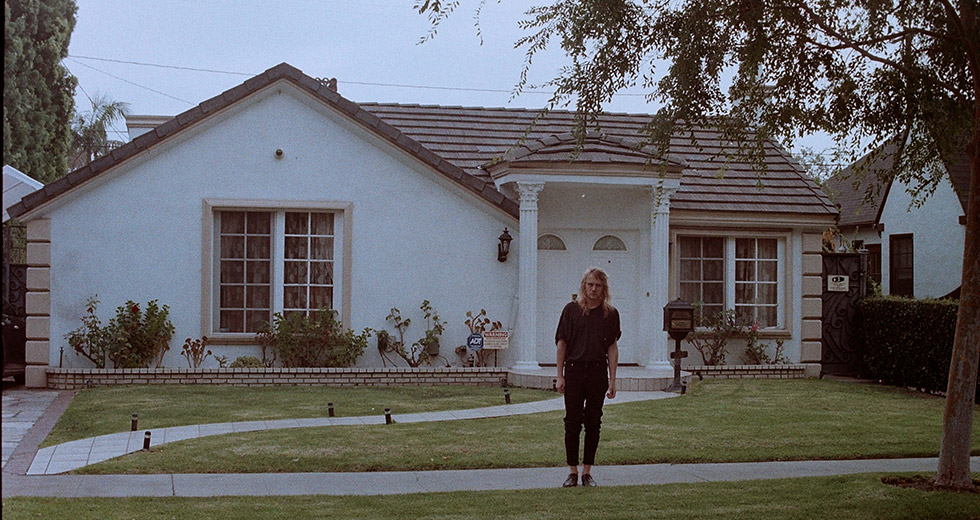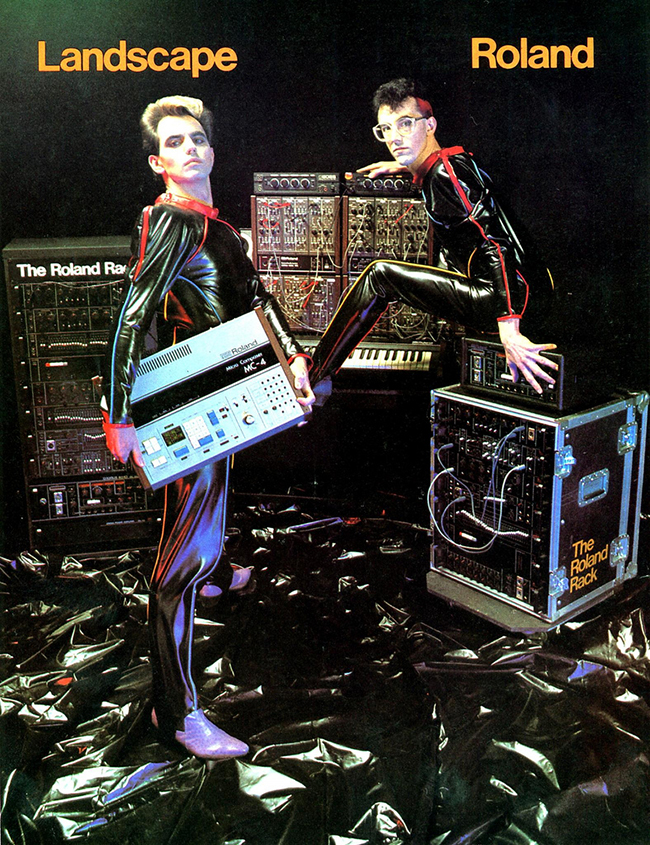Interview: Palmbomen on Los Angeles, the X-Files and his New Album
The Red Bull Music Academy alumnus has made one of the best albums of 2015. Anthony Obst calls up Los Angeles to find out more about its making.

We’ve been fans of Kai Hugo’s music ever since he came to the Red Bull Music Academy in 2011. His latest project, Palmbomen II, sees the Dutch producer step out with his most ambitious artist statement to date. Released this month on Tim Sweeney’s Beats In Space Records, the album recontextualizes the affinity for bright melodies and grainy textures of his band-based Palmbomen project in a lavender-tinged slo-house setting.
Created amidst binge-watch sessions of old X-Files VHS cassettes, the songs on the album are all named after characters on the show, but their sound has more in common with the decaying nature of their tape material than with paranormal activity. Detaching the names even further from their source, Hugo also gives new life to three of these characters in a lovingly crafted video trilogy. Cindy Savalas, Carina Sayles and Leo Danzinger are all exceptionally well-rounded for music video characters. They relay their Americana-streaked stories of hope, melancholy and longing with arresting immediacy, while Hugo’s album tracks provide their emotionally ambiguous soundtracks. Longing is in fact a subject of personal importance for Palmbomen, as we discover in our interview with him, while he gives us a glimpse into his new life in and around Los Angeles.
You mentioned that you just got back from a recording session in the desert. Why did you go there and what was that experience like? I actually went there twice. A week ago, I was in the desert to record a band, and these past two days I was there to record a video. I'm producing a band here from LA that I got in contact with. We worked together on their demos and they just got signed to a cool label. But yeah, that’s one of those things I love about LA. You can rent a cheap house just outside the desert. It's like a two-hour drive and there's nobody around, which makes it easy to focus. I want to go back soon and record an album in the desert myself, so it was really nice to try it out and see how it goes.
You seem to be quite fascinated with American landscapes in general, considering your video for “Carina Sayles.” Is that something you developed when you moved there? Or has that always been with you in a sense? Yeah, I think for me, why I love the US so much… I mean, I hate the US in many ways but I also love it in other ways. For me, growing up in Europe, the US – and especially California – was always like a dreamland. I’ve seen it in movies my whole life, but it was always a sort of utopia that I could never get to. Those nice suburban areas from films like American Beauty or Donnie Darko, we don’t have those in Europe, so they feel like these weird, unknown places. I totally enjoy being able to see these places now and film there. That particular video for “Carina Sayles” was shot at the beach where I always go to chill. I based it on an old tai chi video that I really love. I kind of felt like it had an atmosphere similar to my music, so I wanted to recreate that atmosphere in my own video.
I really admire how the videos feel like they’re very much part of the whole album project. What was your idea going into those videos, in terms of creating the characters for them? I mean, obviously, the names are based on X-Files characters, but what was your idea for the characters in your videos? I made the album while I was in Holland, waiting for my US visa. I was binge-watching those old X-Files videos, and I just randomly took those names and wrote them down. They’re all really minor names in the series, but I just liked how they looked. So when I made the album and gave the tracks all these names, they became somehow anonymous to me. Normally when you give a name to a song, it suggests a sort of atmosphere or something. But with these names all from the same series, I can hardly keep them apart. Part of my thinking behind it was that I wanted to give a face back to the different anonymous names that are actually the names of the songs.
I guess that is something that is very much reflected in these characters in the videos, this strong desire to be perceived as an individual. Yeah, I love it also because I can let them speak, too. I can say things I want to say, which I don't want to do through just the music. I love creating those little worlds.
Was there a certain style or specific directors that you had in mind when you were creating these videos? Oh yeah, I love a lot of Austrian and German filmmakers, for example. I love Haneke. The Seventh Continent has always been a big inspiration for me, which is kind of like the ultimate film for longing. I like the subject of longing for something that isn’t there. That’s always been the subject for Palmbomen, because Palmbomen means palm trees but it stands more for my longing for something that I never had in Europe, living in the cold. I also love Wim Wenders, Paris, Texas, but also those surreal suburban movies like Thumbsucker or Donnie Darko, and stuff from Harmony Korine. Those are all big inspirations for me. But I feel weird talking about it, because I’m just playing around and filming for fun, not making entire films.
Well, let's get into the music a little bit then. With your new album you’re branching out as Palmbomen II with a more dancefloor-oriented sound. What motivated that shift for you? I always felt like I was in the middle of two things. On the one hand, I was around more dance-oriented things and people and parties and festivals. And on the other side, I also did pop. I have bands. It's pretty much a strict divide still for some reason between bands and a lot of electronic music. I actually kind of felt that when I was at the Red Bull Music Academy, too. Some people were making dance music and others were doing songwriting and stuff. There always seems to be a division between the two and that kind of bugged me. Another big reason was that I tried to form a band around Palmbomen, but it was hard to translate the stuff that I made myself, using different layers, to a live setting. I also love to just play around with sequenced stuff, like drum machines and synthesizers, and when I tried to recreate that with the band, I didn't like the feel of it. So I felt like I should split it up into two projects.
That’s also part of the reason why I wanted to go to LA, to kind of start over. When I play with my band, I write songs with them and record so that we can directly play the songs easily and translate it to a live setting easily. I wanted to do the same thing for my electronic stuff. So that's why I decided to split it into the second part, Palmbomen II, which I do the same way. I made all the songs with my live set-up of just drum machines and synthesizers together and I can play them super easily. It's all jams that I did at once, no layering or anything.
I think it turned out really well, and you can tell that the album was made in a very cohesive way. So what exactly does your live set look like now? My live set now fits inside of a big suitcase and it's all connected. I had a technician here who helped me with the setup. It’s basically just an MPC drum machine with some older synthesizers – all portable, all made to fly with, all made to really travel with. It’s important to me that there’s no computer involved, because I didn't want to stare at a screen anymore and I wanted to feel free to really do what I want. It also keeps me from cheating because I have to create everything on the spot. And since my live setup is also my studio setup, it makes me feel like I'm in studio all the time. Whenever I'm traveling, I can take it with me and have it in my hotel and make a new song with it whenever I feel like. It works really quick and fast even without having a computer.
I picked up somewhere that you also scored a PlayStation game recently. How did that come about and what was that experience like? Yeah, that was really fun. I got in contact with the guys through people that I knew. They liked my music and actually had it in their mood board for the game when they were making it. So, yeah, we started talking and they said I was pretty much free to make a sort of album for the game. My friend Marius also helped me with the scoring and I produced it. It was really interesting to make an interactive piece of sound like that. The game is called Metrico and it’s for PlayStation’s handheld console, Vita, but I think it’s gonna come out on PlayStation 4 as well. It’s pretty fun, but I don’t know, I’m not a big game person. I just played it once because I wanted to see it.
One thing you mentioned earlier, which struck me as interesting, was your love/hate relationship with America. Can you elaborate on that a little bit? The dynamics here are just so big. You’re either so poor or so rich. People have nothing or they have everything. A city like LA is especially rough, in many ways. But what I appreciate about it, is that not everything is as controlled as in Europe, especially Holland. Holland is really small, so we have very little free space. Like I mentioned, I like having space for creating art or music or film. Here you can find all these beautiful abandoned spaces and lots of pretty buildings and parks. It feels like a great town for art, because it’s not as regulated as in Germany or Holland. And yeah, I can’t get enough of the weather, of course. People warned me, like, “You're going to miss the seasons.” But I don't miss it at all. Maybe after a few years, but now I just love being outside all the time and I feel really free.

